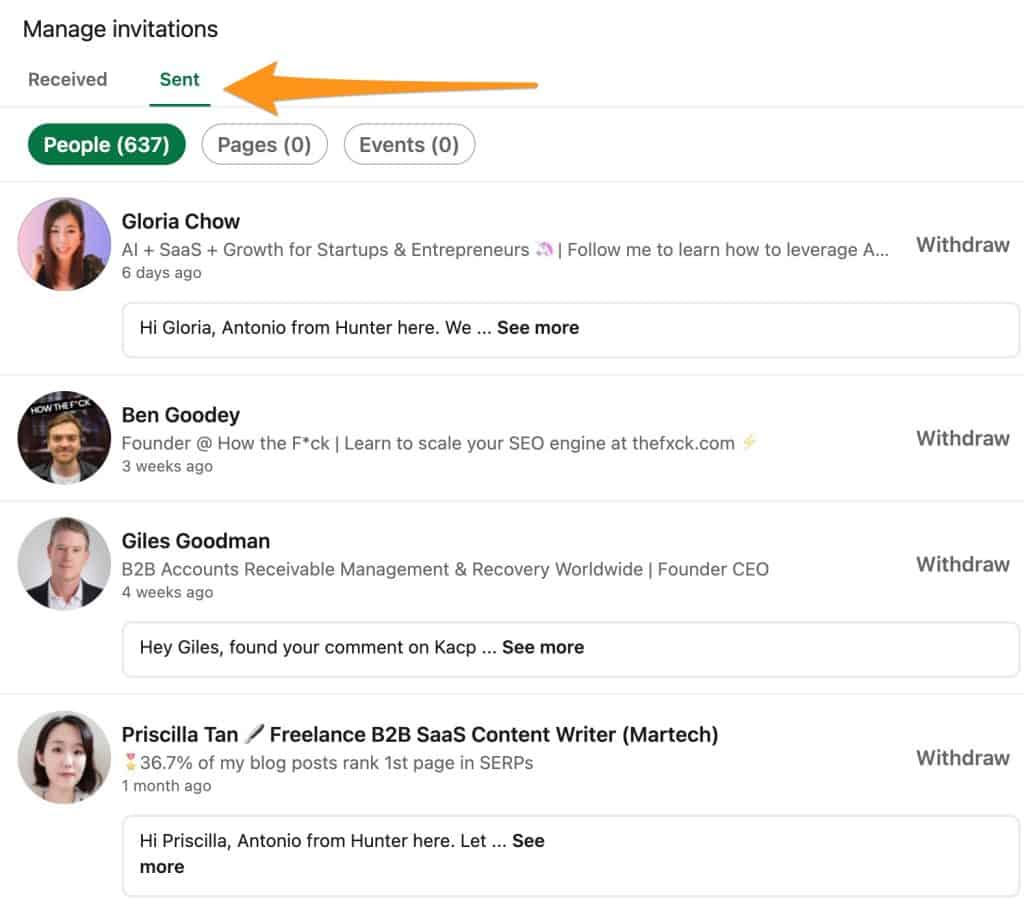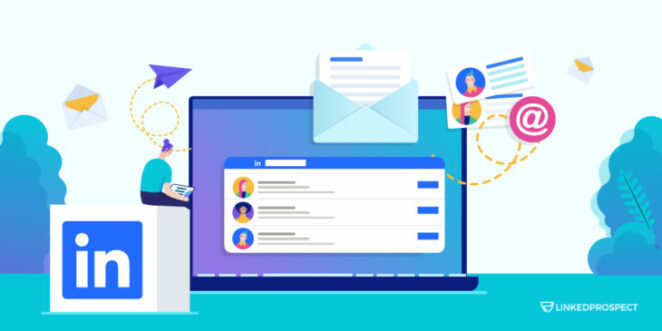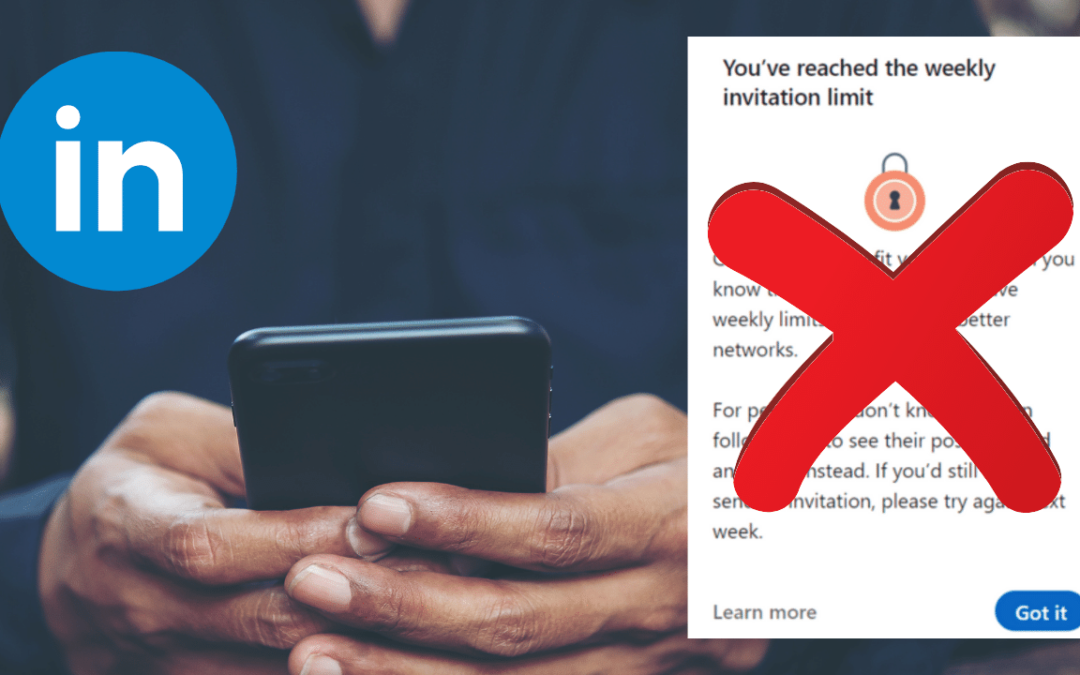LinkedIn has revolutionized how professionals connect, network, and collaborate. One key feature of this platform is the ability to send invitations to connect. But did you know there are limits and guidelines regarding these invitations? Understanding how these work can enhance your networking strategy, ensuring you build valuable connections without running afoul of the platform's rules. In this article, we'll explore LinkedIn's invitation limits and why they matter for your professional growth.
Why Sending Invitations Matters on LinkedIn

Sending invitations on LinkedIn isn’t just a basic function; it’s a powerful tool for nurturing your professional network. Here are some compelling reasons why sending invitations is crucial:
- Expanding Your Network: Every invitation you send can potentially open doors. By connecting with new people, you're not just adding numbers to your profile; you're creating opportunities for collaboration, mentorship, and knowledge exchange.
- Building Professional Relationships: LinkedIn isn’t just about collecting connections. It’s about forming meaningful relationships. When you send that invitation, it's often the first step toward a professional relationship where both parties can benefit.
- Enhancing Your Visibility: More connections mean greater visibility. The more you engage with your network, the more your profile gets viewed. This visibility can lead to job opportunities, partnerships, or client leads.
- Staying Informed: Connecting with industry leaders and peers keeps you informed on trends, news, and opportunities in your field. By sending invitations to people you admire or aspire to work with, you can stay in the loop.
- Leveraging Recommendations: Connections can lead to recommendations. Sometimes, a simple invitation can pave the way for an endorsement or reference that highlights your skills and strengthens your credibility.
However, it's essential to remember that sending invitations should be done thoughtfully. Here’s a quick guide on how to do it effectively:
- Personalize Your Invitations: Avoid the default message. Take a moment to write a brief note explaining why you want to connect.
- Be Selective: Quality over quantity! Focus on connecting with individuals relevant to your professional goals.
- Engage with Your Network: After sending invitations, engage with your new connections through comments, shares, or messages.
In conclusion, sending invitations on LinkedIn is more than just a rote action; it’s a strategic move that can significantly impact your career. By understanding its importance and adhering to LinkedIn’s invitation guidelines, you can cultivate a robust and meaningful network that drives you towards your professional goals. So next time you consider sending an invitation, remember the potential it holds!
Also Read This: What to Say When Messaging a Hiring Manager on LinkedIn
3. Understanding the Invitation Limits on LinkedIn

Ever tried connecting with someone on LinkedIn, only to be hit with a pesky message saying you’ve reached your invitation limit? You're not alone! Understanding the invitation limits on LinkedIn can help you navigate your networking strategy and avoid those frustrating roadblocks.
LinkedIn sets limits on the number of connection requests you can send to maintain the platform’s integrity and reduce spam. While the specifics of these limits aren’t widely published by LinkedIn, here’s what we know:
- Connection Requests: You can typically send up to 100 invitations per week. However, this number can fluctuate based on your usage and response rate.
- Accepted Invitations: Your total connection requests sent must be offset by accepted invitations. If many of your requests go unanswered or are declined, LinkedIn may restrict your ability to send new requests.
- LinkedIn Premium Users: If you have a Premium account, you may have access to additional features that can help in managing connections, such as InMail messages to individuals you’re not connected with.
A key point to remember is that quality over quantity is essential in networking. Instead of sending out dozens of requests, focus on connecting with individuals who align with your professional goals. Personalize your connection messages and explain why you want to connect, as it can increase your acceptance rates.
LinkedIn might also periodically review your activity, particularly if there are sudden spikes in connection requests. If your invites are being ignored or marked as spam, the platform could limit your ability to connect further. So, keep your engagement genuine and thoughtful!
Also Read This: How to Add Employees to Your LinkedIn Company Page
4. Factors Affecting Your Invitation Limits

Now that you have a basic understanding of LinkedIn’s invitation limits, let’s dive deeper into the factors that can affect these limits. Knowing these can help you optimize your connection strategies.
- Connection Acceptance Rate: If a high percentage of your requests go unanswered or are denied, LinkedIn might restrict your ability to send more. Aim for a solid acceptance rate by personalizing your invitations and connecting meaningfully.
- Frequency of Sending Requests: Spamming sends out too many requests in a short time can trigger LinkedIn’s spam filters, leading to temporary bans on sending invites. Pace yourself and monitor how many you’re sending in a short period.
- Profile Completeness: A fully complete LinkedIn profile (including a professional photo, skills, endorsements, and recommendations) can enhance your credibility and likelihood of acceptance. Ensure your profile looks appealing to those you want to connect with.
- Activity Level: Being a consistent user on LinkedIn (sharing posts, engaging with content, and participating in groups) can increase your visibility and the likelihood that new connections will accept your requests.
- Network Size: If you already have a large network, your connection requests might be scrutinized more closely by LinkedIn. Larger connections usually require more patience and time to cultivate.
Understanding these factors can help you navigate LinkedIn more effectively. Relationships matter more than numbers, so take your time to build a meaningful professional network.
Also Read This: How to Add a Resume to LinkedIn: Step-by-Step Instructions
5. Best Practices for Sending LinkedIn Invitations
Sending LinkedIn invitations can be a powerful way to expand your professional network, but there are definitely some best practices you should follow to make the most of your connection requests. Here are a few tips that can help you get better results:
- Personalize Your Message: Always include a personalized message with your invitation. Just clicking "Connect" without a note can come off as lazy or insincere. Craft a short, thoughtful message that explains why you want to connect. For example:
"Hi [Name], I came across your profile while researching [Topic or Industry]. I admire your work at [Company] and would love to connect to share insights and experiences."
- Be Selective: Don’t send invitations to everyone you come across. Be selective and only reach out to people who are relevant to your professional interests or goals. This practice not only increases the chances of your invite being accepted but also helps in building a meaningful network.
- Follow Up: If someone accepts your invitation, make sure to follow up with a thank-you message or start a conversation. This can lay the groundwork for a valuable professional relationship.
- Don’t Spam: Avoid sending too many requests in a short period. This can not only irritate the recipients but also flag your account as spammy, which may lead to restrictions.
- Stay Professional: Remember that LinkedIn is a professional network. Keep your language and tone formal—it’s not the same as sending a casual message on social media.
By following these best practices, you can create more meaningful connections on LinkedIn and make the most out of the platform!
Also Read This: How to Find Resume on LinkedIn: Accessing and Editing Your Resume
6. What to Do If You've Reached Your Invitation Limit
We've all been there: you’re eager to expand your network, and suddenly, you hit that dreaded invitation limit. But don’t worry—there are ways to handle this situation. Here's what you can do:
- Wait It Out: The simplest solution is to wait. LinkedIn resets your invitation limits periodically, so after a day or two, you may find yourself able to send invitations again. Make sure to keep track of how many you’ve sent!
- Remove Unaccepted Invitations: If you've sent invitations that haven’t been accepted, consider withdrawing them. This will free up space in your invitation queue. To do this, go to your "My Network" section, find "Manage" under "Invitations," and you can see those pending invites to remove.
- Engage with Existing Connections: While you’re waiting, focus on engaging with your existing connections. Commenting on their posts, sharing relevant articles, or sending them messages can keep your networking alive and fruitful even if you’re unable to send new invites.
- Review Your Network Strategy: Use this downtime to assess your networking strategy. Ask yourself questions like: Are you connecting with the right people? Are your connection requests personalized? Adjust your approach accordingly for better results when you can send invites again.
Remember, hitting the invitation limit isn’t the end of the world—it's an opportunity to refine your networking tactics and ensure you’re building a high-quality professional network. So, next time you find yourself in this situation, keep these strategies in mind!
Also Read This: Understanding Car Parts: Genuine, OEM, and Aftermarket — What’s the Real Difference?
7. Alternatives to Direct Invitations on LinkedIn
While sending direct invitations on LinkedIn is a common practice, there are several alternatives that can help you connect with others effectively while avoiding the limits imposed by the platform. Here are some strategies to consider:
- Engage with Content: Before sending that connection request, take a moment to engage with the person’s content. Like, comment, or share their posts. This not only puts you on their radar but also serves as a way to establish common ground.
- Join LinkedIn Groups: Find groups related to your industry or interests and participate actively. Engaging in discussions within these forums can help you build rapport with potential connections. Once you’ve interacted, reaching out to someone from the group often feels more natural.
- Utilize InMail: For a more personalized approach, consider using InMail if you have a premium account. This allows you to message users without a direct connection and can be a great way to introduce yourself or propose collaboration.
- Attend LinkedIn Events: LinkedIn offers virtual events where professionals gather to discuss various topics. Attending these events gives you the opportunity to connect with attendees afterward, as you share a common interest.
- Share Valuable Content: Create and post your own valuable content to attract attention. When you share insights, articles, or tips, others who find your content helpful are more likely to reach out or accept your invitation down the line.
By leveraging these alternatives, you can expand your network and build meaningful professional relationships without solely relying on direct invitations. Each of these strategies fosters more organic connections that often yield better engagement than a standard connection request.
8. Conclusion: Navigating LinkedIn Invitations Effectively
Understanding LinkedIn invitation limits and guidelines is key to navigating this powerful networking platform. Whether you're a seasoned user or just starting, being mindful of how you send invitations can greatly enhance your networking experience.
Here's a quick recap of what we discussed:
- Respect the invitation limits to maintain your credibility.
- Always personalize your invitations. A simple note can make a significant difference!
- Explore alternatives to direct invitations, such as engaging with content and leveraging LinkedIn groups.
Building a network should be about quality, not quantity. Instead of focusing on the number of connections you have, strive to connect with individuals who share your professional interests and values. Each connection should ideally add value to your network, leading to fruitful discussions and opportunities.
Lastly, remember that LinkedIn is a professional networking site, so always approach invitations with professionalism and courtesy. With these insights and strategies, you're well-equipped to navigate LinkedIn invitations effectively and make valuable connections that could lead to exciting opportunities!
 admin
admin








